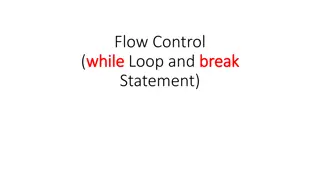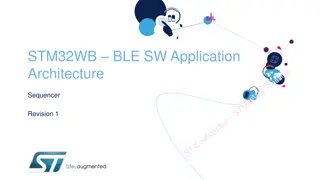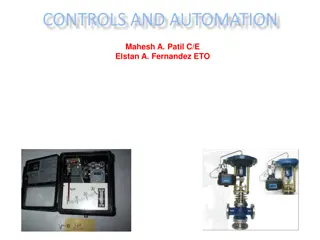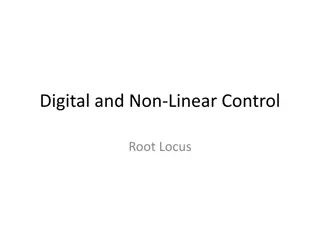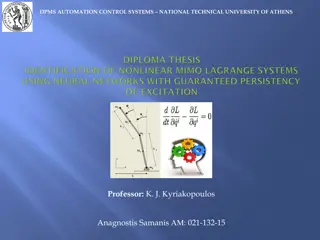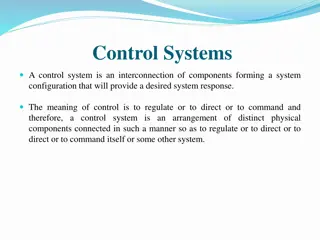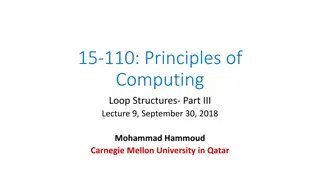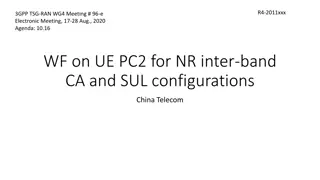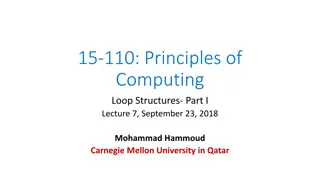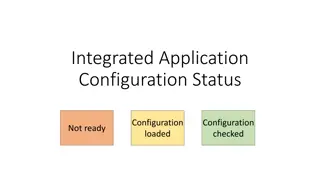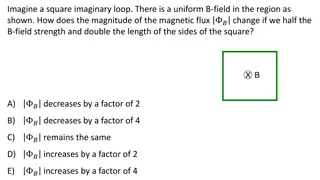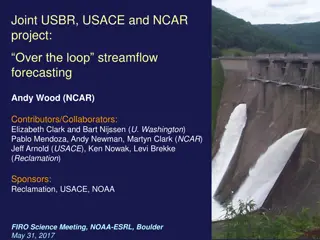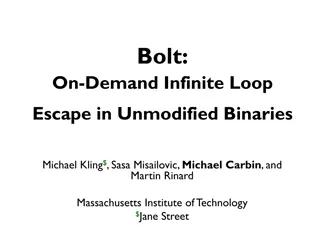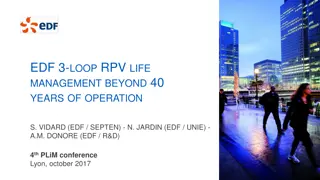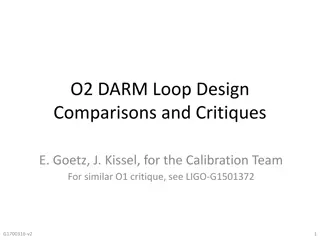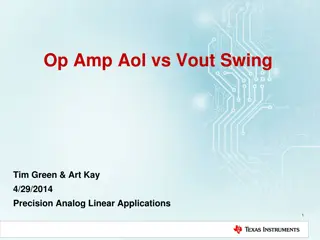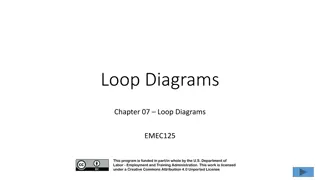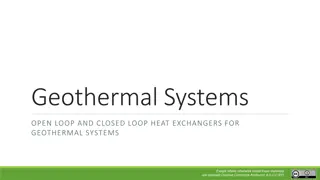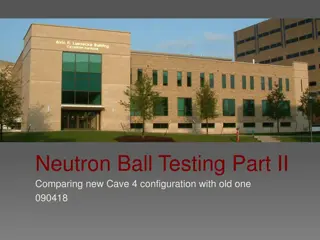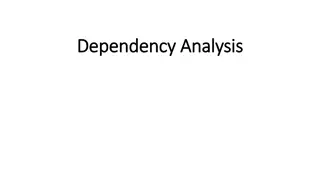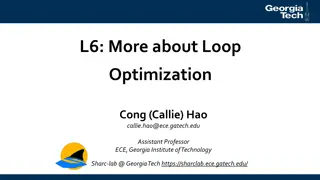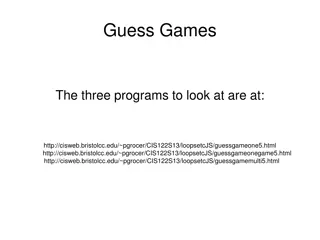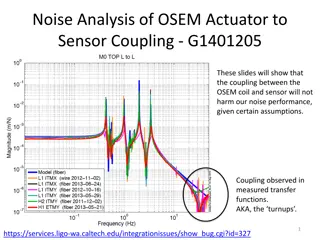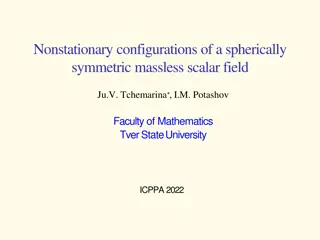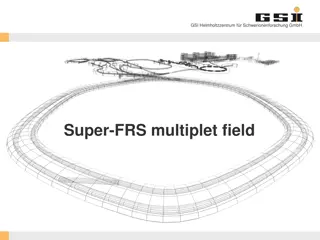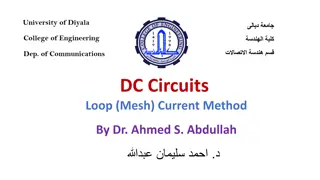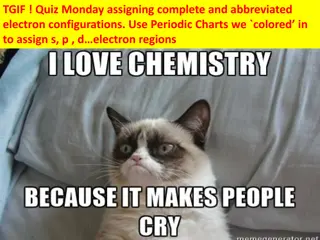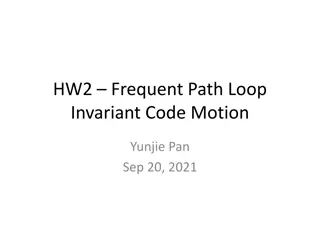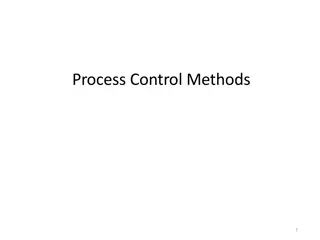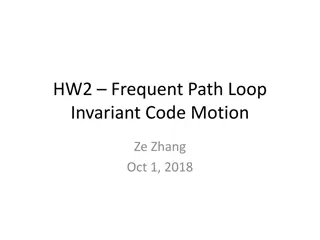Understanding Atomic Configurations and Term Symbols
The energy of atomic configurations is determined by electrostatic attraction between electrons and the nucleus, electron-electron repulsion, spin-orbit coupling, and spin-spin interactions. Term symbols in electronic spectroscopy specify atomic states using quantum numbers. Hund's rule and the Paul
8 views • 12 slides
Understanding Control Systems in Ergonomics Macro
Control systems play a vital role in regulating and managing various processes within different industries. This content delves into the fundamentals of control systems, discussing terms like input, output, plant, process, system, open-loop system, closed-loop system, transfer function, feedback con
8 views • 15 slides
Understanding Flow Control with While Loops and Break Statements
Learn about the flow control using while loops and break statements in programming. Explore examples of finding the sum of numbers, creating a loop to stop on user input, and using a break statement to exit a loop. Practice essential concepts through pseudocode algorithms and practical tasks.
0 views • 12 slides
STM32WB BLE SW Application Sequencer Architecture Overview
The STM32WB BLE SW Application Sequencer is a specialized framework that optimizes while loop bare-metal implementations to avoid race conditions, especially in low power modes. It is not intended to compete with standard operating systems but rather with bare-metal implementations. The sequencer al
2 views • 14 slides
Controls and Automation Session Objectives and Terminology
Explore the objectives and terminology related to controls and automation, including P.I.D. controller theory, valve positioner, and actuator workings. Learn about different control actions, such as proportional, integral, and derivative control, and understand concepts like set point, open-loop sys
1 views • 12 slides
Understanding Root Locus Method in Control Systems
The root locus method in control systems involves tracing the path of roots of the characteristic equation in the s-plane as a system parameter varies. This technique simplifies the analysis of closed-loop stability by plotting the roots for different parameter values. With the root locus method, de
0 views • 41 slides
Development of Learning Techniques in Automation Control Systems
Development of Learning Techniques in Automation Control Systems at the National Technical University of Athens focuses on system identification, parameter approximation, and achieving control goals using statistical methods and mathematical models. Techniques such as open loop form, closed loop for
1 views • 18 slides
Discussion on Multi-PUSCH Configuration for UTO-UCI Content Moderator at Ericsson
This discussion encompasses the configuration and implications of the Multi-PUSCH setup based on agreed parameters within the UTO-UCI content moderation context at Ericsson. It delves into varying configurations, potential impacts, and considerations for effective utilization. The slides provide ins
0 views • 17 slides
Understanding Control Systems for Desired System Response
A control system is an interconnection of components that regulate, direct, or command a system's response. It consists of plant, feedback, controller, and error detector components. The plant is the unit to be controlled, feedback allows automatic correction, the error detector compares inputs, and
2 views • 10 slides
Understanding Loop Structures in Python Programming
This lecture covers Loop Structures, specifically focusing on the while statement and nested loops in Python programming. It discusses the Fibonacci sequence and demonstrates how to write a program to compute the nth Fibonacci number. Additionally, it explains the difference between definite and ind
3 views • 22 slides
Electronic Meeting Agenda: UE PC2 for NR Inter-Band CA and SUL Configurations
The document relates to the upcoming electronic meeting of 3GPP TSG-RAN WG4, focusing on UE power class 2 for NR inter-band Carrier Aggregation and supplemental uplink configurations. It includes background contributions, identified issues, and options for SAR schemes addressing duty cycle based sol
5 views • 5 slides
Understanding Python For Loop and its Applications
The lecture discusses the principles of computing loop structures, focusing on the for loop in Python. It explains the general form of a for loop, its flowchart, and provides an example of computing the average of a series of numbers using a for loop. The session highlights the importance of control
0 views • 19 slides
Configurations and Tests Overview in Integrated Applications
This content provides an overview of various configurations and tests in integrated applications, covering aspects such as status, loaded configurations, readiness checks, server tests for HV and LV systems, as well as client-server interactions. It details the different components involved and thei
0 views • 5 slides
William Wates Memorial Trust: Honoring Will's Legacy through Le Loop Cycling Event
The William Wates Memorial Trust organizes Le Loop, where amateur cyclists ride the Tour de France route for charity. Participants commit to fundraising targets and support disadvantaged youth. Will Wates' legacy lives on through this event, which aims to give back and help young people fulfill thei
0 views • 12 slides
Understanding Magnetic Flux and Induced Current in Loops
Explore concepts related to magnetic flux and induced current in loops through visual scenarios involving uniform magnetic fields, loop movements, and changes in magnetic flux. Test your understanding with multiple-choice questions on induced EMF, loop bending, and maximizing magnetic flux. Enhance
1 views • 54 slides
Over-the-Loop Streamflow Forecasting Project Summary
Joint project by USBR, USACE, and NCAR focusing on improving streamflow forecasting using automated over-the-loop approaches. Key challenges include model calibration, data assimilation, and real-time forcings. Objectives involve building an automated system for short- to long-term flow predictions
0 views • 41 slides
Escaping Infinite Loops with Bolt: On-Demand Modification for Unresponsive Binaries
Explore how the tool Bolt allows users to escape infinite loops in unresponsive applications by dynamically instrumenting binaries, detecting loop iterations, and offering strategies for bypassing the loop without losing work. Key properties include no special compilation and minimal overhead when a
4 views • 35 slides
EDF 3-Loop RPV Life Management Beyond 40 Years of Operation
Ageing management process is crucial for EDF's Long Term Operation policy, focusing on safety-related components like mechanical, electrical, and civil works. The process involves selecting structures/components prone to ageing mechanisms, identifying relevant ageing mechanisms, and implementing act
0 views • 23 slides
Comparison and Critique of DARM Loop Design for Calibration Team
This document provides detailed comparisons and critiques of the DARM loop design, focusing on aspects such as open loop gain transfer function, actuator strength, hierarchy filters, and DARM filter and sensing function. Key points include variations in UGF, phase margins, gain margin, actuator comp
0 views • 26 slides
Understanding Op-Amp Output Swing Limitations in Linear Applications
Explore the limitations of op-amp output swing in linear applications, focusing on the non-linear behavior when driven into saturation. Learn how open-loop voltage gain affects output swing and the implications of operating closer to the rails. Check datasheet specifications for op-amp constraints a
0 views • 5 slides
Overview of Loop Diagrams in Process Control Systems
Loop diagrams are essential documents in process control systems, providing schematic representations of hydraulic, electric, magnetic, or pneumatic circuits. They detail instrumentation arrangements, signal connections, power connections, and termination information. Guidelines and standards for cr
1 views • 5 slides
Comprehensive Guide to Loop Diagrams in Process Control Systems
Loop diagrams are essential documents in process control systems, depicting hydraulic, electric, magnetic, or pneumatic circuits. This comprehensive guide covers loop diagram definitions, components, guidelines, development stages, and instrument connection symbols. It explains what loop diagrams en
0 views • 13 slides
Understanding Urine Concentration Mechanisms in the Renal System
The lecture covers the concepts of urine concentration and dilution in the renal system, focusing on the loop of Henle and countercurrent multiplier and exchange systems. It discusses how the loop of Henle reabsorbs salt and water to determine urine osmolarity, factors influencing medullary gradient
0 views • 20 slides
Understanding Geothermal Systems and Heat Exchangers
This content provides a comprehensive overview of geothermal systems, focusing on open and closed loop heat exchangers. It covers basic geothermal terminology, loop configurations, thermal conductivity tests, and the efficiency of closed loop systems. Key concepts like heat pump basics and the influ
0 views • 21 slides
Comparison of New and Old Cave Configurations in Neutron Ball Testing
This content discusses the comparison between the new and old cave configurations in the Neutron Ball testing part II. It showcases images and descriptions of the different cave configurations, highlighting the progress in research at the Cyclotron Institute. The Neutron Ball's functionality and tes
0 views • 14 slides
Understanding Data Dependencies in Nested Loops
Studying data dependencies in nested loops is crucial for optimizing code performance. The analysis involves assessing dependencies across loop iterations, iteration numbers, iteration vectors, and loop nests. Dependencies in loop nests are determined by iteration vectors, memory accesses, and write
0 views • 15 slides
Feedback Loop Compensation Design Using UCC28740 for Voltage Regulation
Explore the detailed design and control laws for a feedback loop compensation system using UCC28740 in a flyback regulator schematic diagram. The control law profile in CV mode, multiple control regions, and gain blocks are discussed for achieving high efficiency in voltage regulation. Gain blocks d
1 views • 16 slides
Insights into Loop Optimization and Hardware Specialization with HLS
Learn about loop optimization and hardware specialization with High-Level Synthesis (HLS) from the expertise of Assistant Professor Callie Hao at Georgia Institute of Technology. The content covers topics such as array partitioning, memory parallelism, performance gains through specialization, and t
0 views • 46 slides
JavaScript Guess Number Game - Loop Implementation
In this JavaScript guessing game, a random number is generated, and the user is prompted to guess the number. If the guess is incorrect, the user receives feedback on whether the guess was too high or too low. A loop using a do...while statement is implemented to allow the user to keep guessing unti
0 views • 14 slides
Noise Analysis of OSEM Actuator-Sensor Coupling
These slides detail the analysis of the coupling between the OSEM actuator and sensor, focusing on noise performance and assumptions made in the damping model. The measured open loop transfer functions and derivation of closed-loop noise transmission with OSEM coupling are discussed. Simulations and
0 views • 8 slides
Understanding Electron Configurations and the Periodic Table in Chemistry
Explore the world of electron configurations in atoms, subshells, and electron arrangement using the periodic table. Learn about the organization of electrons in subshells, different ways to represent electron arrangements, and how to determine electron configurations based on the periodic table. Di
0 views • 12 slides
Nonstationary Configurations of a Spherically Symmetric Scalar Field
Action and stress-energy tensor, Einstein-Klein-Gordon equations, and method for constructing nonstationary configurations of a spherically symmetric scalar field are discussed in this study. The behavior of the characteristic function allows interpretations such as black holes, wormholes, or naked
0 views • 14 slides
Overview of Magnet Configurations at GSI Helmholtzzentrum GmbH
This document provides detailed information on the magnet configurations at GSI Helmholtzzentrum GmbH, focusing on multiplet designs, magnetic field simulations, quadrupoles, sextupoles, and steering dipoles. It covers the general design of SC multiplets, requirements on axis and angles, and specifi
2 views • 17 slides
Understanding DC Circuits: Mesh Current Method by Dr. Ahmed S. Abdullah
The DC Circuits Loop (Mesh) Current Method, explained by Dr. Ahmed S. Abdullah, applies Kirchhoff's Voltage Law (KVL) to find unknown currents in a circuit. This method involves assigning loop currents to loops, applying KVL to each loop, and indicating voltage polarities across all resistors based
0 views • 31 slides
Understanding Electronic Configurations Through Simplified Assignments
Exploring electron configurations and orbital regions using simplified notations colored in on Periodic Charts. Descriptions and visual aids for Carbon, Fluorine, and excited state of Fluorine. Learn to assign s, p, d, and f electron neighborhoods without memorization through a fun song. Includes te
0 views • 14 slides
Loop Invariant Code Motion in Frequent Paths for Optimization
Loop Invariant Code Motion (LICM) is a key optimization technique that identifies and moves code operations whose operands remain constant within a loop to improve performance. The process involves careful consideration of memory operations and operations not executed every iteration. The assignment
0 views • 20 slides
Process Control Methods and Systems Overview
Process control involves different methods such as open-loop and closed-loop control systems to ensure a controlled variable remains at a desired set-point. Open-loop systems operate without feedback, while closed-loop systems are more effective by incorporating a feedback loop for self-regulation.
0 views • 38 slides
DC Motor Control Techniques and Configurations
This chapter delves into various aspects of PWM and DC motor control, exploring characteristics of selected DC motors, rotation mechanisms, H-bridge configurations for motor direction control, logic configurations for motor operation, bidirectional motor control using an L298 chip, pulse width modul
0 views • 27 slides
Precision Linear Analog Circuit Analysis
Explore the detailed analysis of a precision linear analog circuit, featuring dual feedback configurations, beta values, control loop derivations, and loop gain calculations. The content covers key components, such as operational amplifiers and resistors, and explains how to derive closed-loop gain,
0 views • 18 slides
Loop Invariant Code Motion (LICM) in LLVM
Loop Invariant Code Motion (LICM) is a technique used in LLVM to move operations that do not change within a loop outside of the loop, improving performance by executing them only once per loop iteration. This process must be done carefully to handle memory operations and operations that are not exe
0 views • 19 slides


